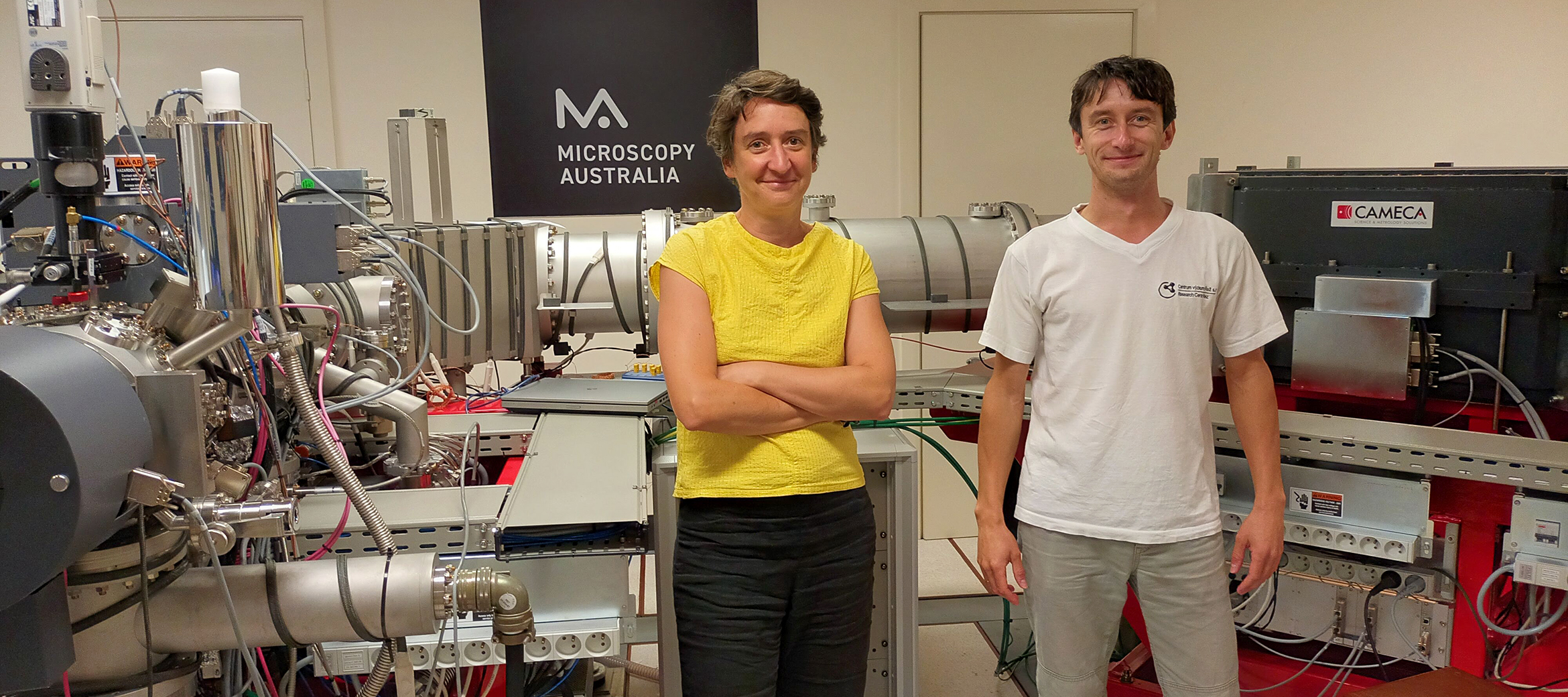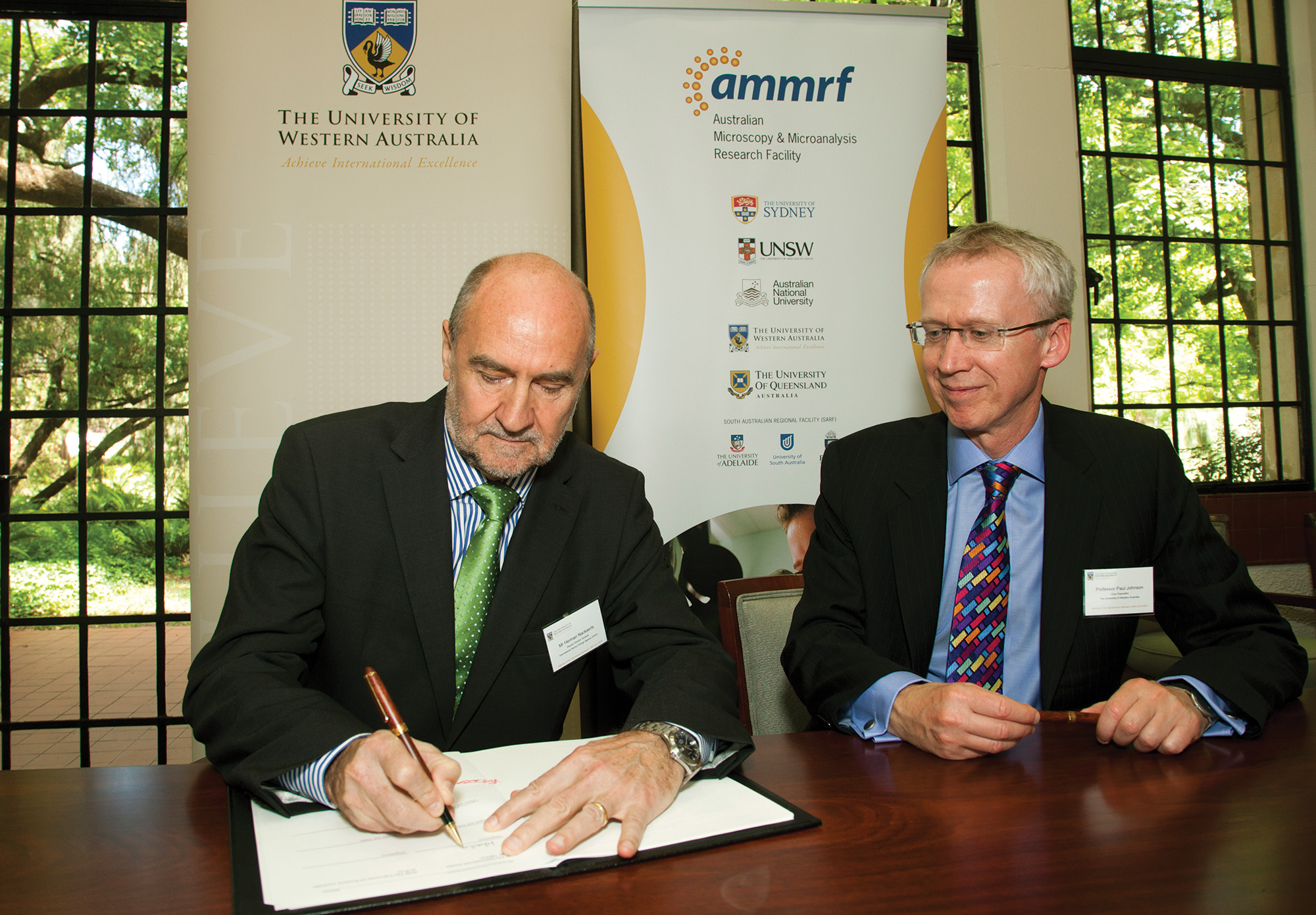Since 2012, Microscopy Australia’s University of Western Australia facility has played a critical role in supporting the International Atomic Energy Agency (IAEA) as a member of the IAEA’s prestigious Network of Analytical Laboratories.
This facility is the only university-based laboratory in the world qualified to perform nuclear safeguards analysis on environmental samples for the IAEA. Using a state-of-the-art ion probe instrument, Microscopy Australia’s expert staff have spent the past decade analysing samples collected from around the globe. Their work helps detect undeclared nuclear activities—an essential function in the IAEA’s mission to verify the peaceful use of nuclear materials.

Microscopy Australia staff, Dr Laure Martin and Mr Matvei Aleshin with the IMS1280 instrument used for IAEA work.
The IAEA has formally recognised this contribution in letters of appreciation, noting the laboratory’s consistent delivery of high-quality analytical support:
“I’m writing to express the appreciation of the Department of Safeguards, from the International Atomic Energy Agency (IAEA), for the sample analysis support provided by your team at the University of Western Australia.
The Department of Safeguards relies on the analysis of environmental samples for the detection of undeclared nuclear activities at facilities around the world. Few laboratories can provide the specialized analytical methods and techniques that are required by the IAEA to assure the completeness of State declarations. Following its official qualification in 2012 under the IAEA’s Network of Analytical Laboratories, the UWA has provided consistent and high-quality analysis support over the past nine years.
The number of environmental samples collected by safeguards inspectors has risen notably during the past few years and continues to rise as an unprecedented rate. In light of this, as well as potential new challenges facing the international community, we were very pleased to learn that UWA was in a position to double its analysis support for the IAEA – from 20 to 40 samples per year. Without the critical support of important institutions such as UWA, the IAEA would be challenged to draw safeguards conclusions within the time frames required to detect and deter undeclared nuclear activities. We are therefore grateful for the support provided by UWA in support of our shared goal of international peace and security.”
In 2023, officials from the IAEA, the Australian Safeguards and Non-Proliferation Office (ASNO), and the Department of Foreign Affairs and Trade (DFAT) witnessed firsthand the laboratory’s unique capabilities. Delegates were impressed by the advanced instrumentation and the expertise of the team, expressing strong interest in deepening collaboration into the future.

The IAEA, ANSO and DFAT delegation, along with Microscopy Australia staff, on their 2023 visit to our University of Western Australia facility, the Centre for Microscopy, Characterisation, and Analysis.
Through its partnership with the IAEA, Microscopy Australia’s UWA facility supports Australia’s commitment to global nuclear non-proliferation and the peaceful use of nuclear technology.

In 2012, Deputy Director General Herman Nackaerts (left) from the IAEA travelled from Vienna to participate in a signing ceremony held at the University of Western Australia. He was joined by Vice-Chancellor Prof. Paul Johnson (right). Microscopy Australia was formerly the AMMRF.
Microscopy Australia SIMS expert Dr Laure Martin talking to the IAEA, ASNO and DFAT delegation visiting our UWA faciity in May 2023
June 25, 2025